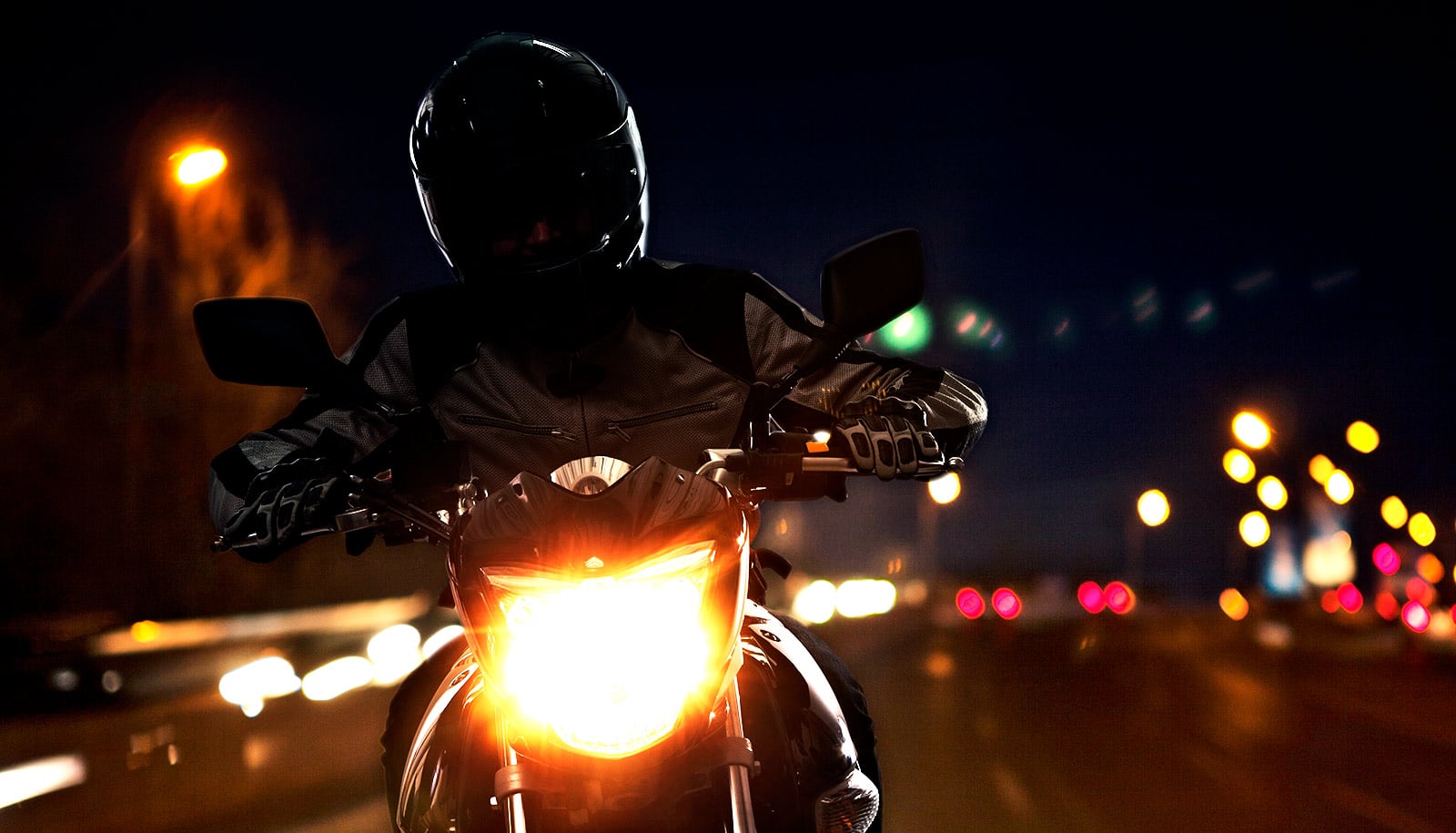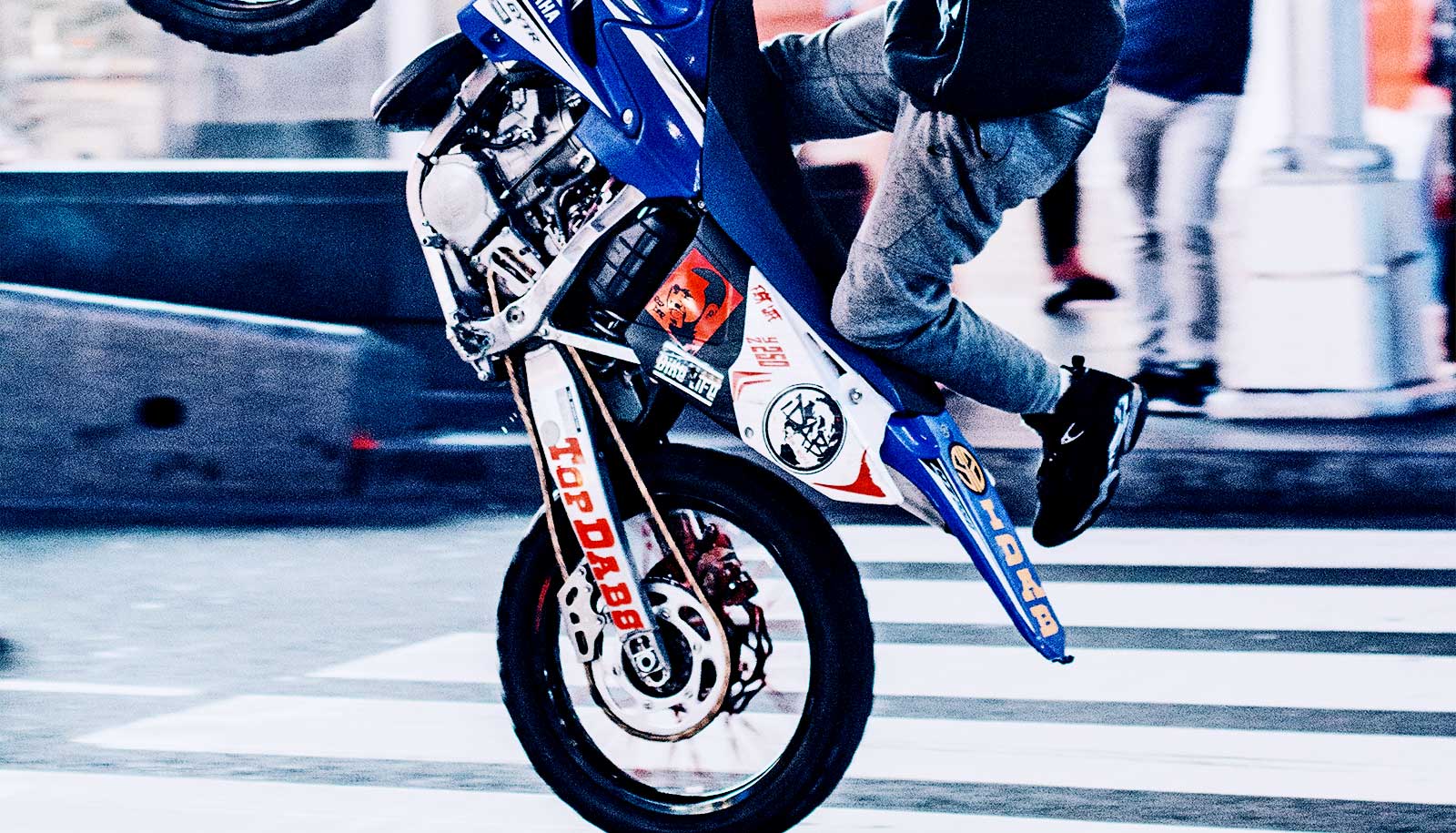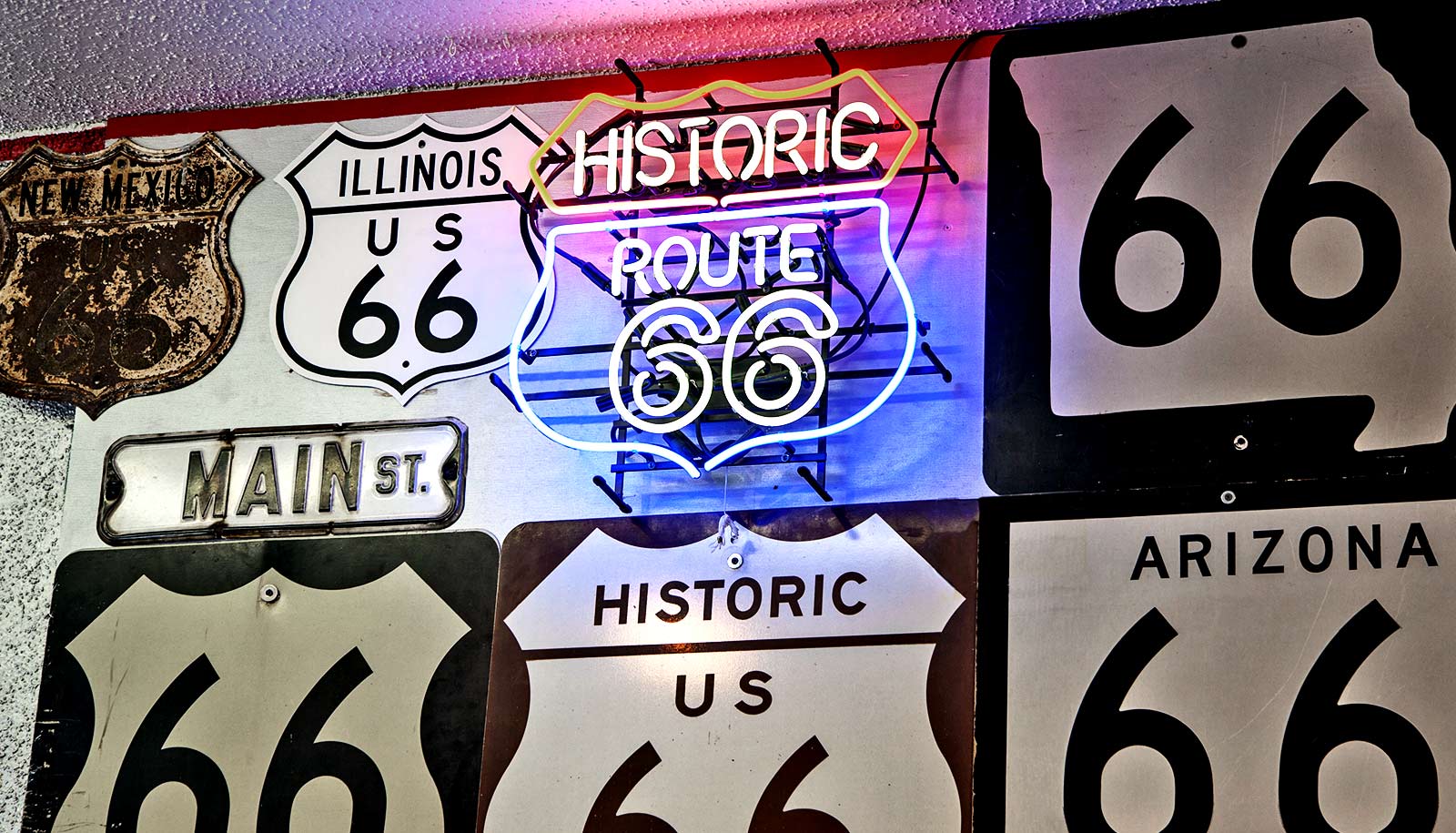New motorcycle lighting design could save lives, researchers say.
Six lights running from top to bottom rather than a single headlight could improve other drivers’ abilities to see motorcyclists, their new study finds.
Motorcycle drivers are 27 times more likely to die in an accident than those in regular passenger vehicles. Night driving is especially dangerous, accounting for nearly half of all fatal crashes.
“Because motorcycles are smaller than many other vehicles, it is more difficult for other drivers to accurately judge their motion on the roadway,” says lead author Bradley Weaver from Emory Healthcare, who earned his PhD at Rice University.
“It is particularly difficult at night when a motorcycle has only a single headlight because other drivers can’t see the motorcycle’s full height or width.”
The study, published in the journal Transportation Research Part F: Traffic Psychology and Behaviour, reveals that improved lighting could result in other motorists being able to see motorcycles up to 0.8 seconds sooner.
“Just under a second might not seem like a lot, but reducing a driver’s response time to a potential collision can make a difference between life and death,” says Pat DeLucia, a professor of psychological sciences at Rice who conducts human factors research, particularly related to transportation and health care.
For the study, DeLucia and Weaver recruited 35 people between 19 and 70 years old to take part in a laboratory driving simulation. The researchers measured how quickly the participants saw motorcycles with various enhanced lighting configurations that illuminated their full height and width.
Each of the new designs improved response times compared with a single headlight, but the participants reacted most quickly to the configuration of six lights.
Source: Rice University


